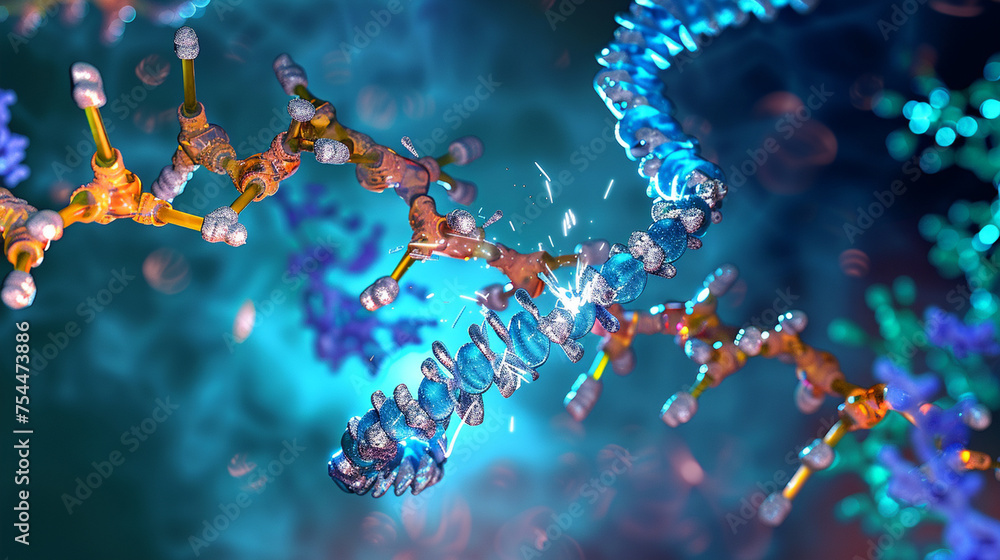Precise Gene Editing: Advanced Tools For Complete Gene Insertion

Table of Contents
CRISPR-Cas9 for Precise Gene Insertion
CRISPR-Cas9 has emerged as a leading tool for precise gene editing, offering a powerful and relatively simple method for complete gene insertion. This revolutionary technology harnesses the natural defense mechanism of bacteria against viruses.
Mechanism of Action
CRISPR-Cas9 works by using a guide RNA (gRNA) molecule to target a specific DNA sequence within the genome. This gRNA acts as a "GPS," guiding the Cas9 enzyme – a molecular scissor – to the precise location. Once there, Cas9 creates a double-stranded break in the DNA. A donor DNA template, containing the desired gene sequence, is then introduced into the cell. The cell's natural repair mechanisms utilize this template to seamlessly insert the new gene into the targeted location, achieving complete gene insertion.
Advantages and Limitations
CRISPR-Cas9 boasts several advantages, including:
- High efficiency in gene targeting: Compared to previous methods, CRISPR-Cas9 demonstrates significantly higher efficiency in reaching and modifying the target gene.
- Relatively low cost: This makes it a more accessible tool for researchers and clinicians.
- Versatility: The system can be easily adapted to target various genes and insert different DNA sequences.
However, limitations exist:
- Potential for off-target effects: The Cas9 enzyme may inadvertently cut DNA at unintended locations, potentially causing harmful mutations. Careful design and optimization of the gRNA are crucial to minimize these effects.
- Challenges in efficient delivery: Getting the CRISPR-Cas9 system into the target cells can be challenging, particularly in vivo (within a living organism).
Advanced CRISPR Systems for Enhanced Precision
While CRISPR-Cas9 has proven revolutionary, ongoing research focuses on improving its precision and reducing off-target effects. This has led to the development of advanced CRISPR systems, including base editing and prime editing.
Base Editing
Base editors modify single nucleotides without causing double-stranded DNA breaks. This approach significantly improves precision, reducing the risk of off-target edits. Cytosine base editors (CBEs) and adenine base editors (ABEs) are examples of such tools, each capable of converting specific DNA bases to others.
Prime Editing
Prime editing represents a significant leap forward in gene editing precision. This versatile technique uses a reverse transcriptase fused to Cas9 to directly write new genetic information into the genome, without relying on the cell's less-precise DNA repair mechanisms. It can perform all types of point mutations, small insertions, and deletions with exceptional accuracy.
- Reduced risk of off-target edits: Compared to traditional CRISPR-Cas9, base and prime editing drastically minimize unintended modifications.
- Enhanced specificity and targeting accuracy: These advanced systems offer far greater control and precision over the gene editing process.
- Ability to perform various types of gene modifications: They enable a wider range of genomic alterations, expanding the therapeutic possibilities.
- Still relatively new technology: Ongoing research continues to optimize these systems and explore their full potential.
Non-CRISPR-Based Gene Insertion Techniques
While CRISPR-based systems dominate the field, other methods for complete gene insertion are also being actively explored.
Viral Vectors
Viral vectors, such as adeno-associated viruses (AAVs) and lentiviruses, are widely used for gene delivery. They effectively infect cells and deliver the therapeutic gene into the target genome.
Non-viral Methods
Non-viral methods, including lipid nanoparticles and electroporation, offer alternative approaches. These methods typically induce less immunogenicity compared to viral vectors, although they may have lower transfection efficiency.
- Viral vectors offer high transfection efficiency: but carry inherent safety risks, potentially triggering immune responses.
- Non-viral methods are generally safer: but may require optimization to achieve efficient gene delivery.
- Ongoing research: focuses on improving both viral and non-viral delivery systems for complete and precise gene insertion.
Applications of Precise Gene Editing for Complete Gene Insertion
The ability to precisely insert genes opens up extraordinary possibilities in medicine and research.
Gene Therapy
Precise gene editing holds immense promise for treating a wide spectrum of genetic disorders. Complete gene insertion could correct disease-causing mutations in conditions like cystic fibrosis, sickle cell anemia, and hemophilia, potentially offering curative therapies.
Biomedical Research
Precise gene editing is indispensable in basic research. It allows scientists to study gene function, create genetically modified animal models to study human diseases, and develop new therapeutic strategies.
- Correcting disease-causing mutations: Precise gene editing can restore the function of faulty genes.
- Inserting functional genes into cells: This allows the introduction of entirely new functions into cells.
- Creating genetically modified animal models for research: This facilitates preclinical testing of new therapies and studying disease mechanisms.
- Developing novel therapeutic strategies: This opens pathways to develop new treatments for currently incurable diseases.
Conclusion
Precise gene editing, with its advanced tools capable of complete gene insertion, represents a transformative advancement in biomedical science. CRISPR-Cas9, base editing, prime editing, and various gene delivery systems offer powerful and increasingly precise methods for manipulating the genome. The ongoing development and refinement of these technologies promise to revolutionize gene therapy and biomedical research, offering hope for curing genetic diseases and furthering our understanding of life itself. Explore the world of precise gene editing and discover the power of complete gene insertion to shape the future of medicine.

Featured Posts
-
 Emma Raducanus Miami Open Quarterfinal Run
May 30, 2025
Emma Raducanus Miami Open Quarterfinal Run
May 30, 2025 -
 Apples Potential Operating System Name Changes
May 30, 2025
Apples Potential Operating System Name Changes
May 30, 2025 -
 Top Seed Pegula Claims Charleston Championship After Collins Match
May 30, 2025
Top Seed Pegula Claims Charleston Championship After Collins Match
May 30, 2025 -
 Is Manila Bays Vibrancy Sustainable
May 30, 2025
Is Manila Bays Vibrancy Sustainable
May 30, 2025 -
 Dyl Twrw Yustr Asmh Bhrwf Mn Nwr Fwz Tarykhy Llmksyk Fy Jyrw Iytalya Ebr Jrydt Alryad
May 30, 2025
Dyl Twrw Yustr Asmh Bhrwf Mn Nwr Fwz Tarykhy Llmksyk Fy Jyrw Iytalya Ebr Jrydt Alryad
May 30, 2025
Latest Posts
-
 Griekspoor Stuns Zverev In Indian Wells Second Round
May 31, 2025
Griekspoor Stuns Zverev In Indian Wells Second Round
May 31, 2025 -
 Griekspoor Pulls Off Major Upset Against Zverev At Indian Wells
May 31, 2025
Griekspoor Pulls Off Major Upset Against Zverev At Indian Wells
May 31, 2025 -
 Zverev Loses To Griekspoor In Indian Wells Shock
May 31, 2025
Zverev Loses To Griekspoor In Indian Wells Shock
May 31, 2025 -
 Zverevs Road To The Munich Semifinals A Comeback Story
May 31, 2025
Zverevs Road To The Munich Semifinals A Comeback Story
May 31, 2025 -
 Tallon Griekspoor Defeats Alexander Zverev At Indian Wells
May 31, 2025
Tallon Griekspoor Defeats Alexander Zverev At Indian Wells
May 31, 2025
